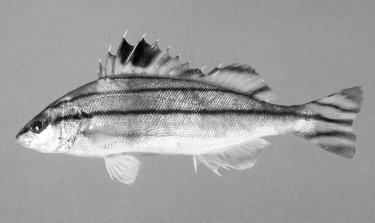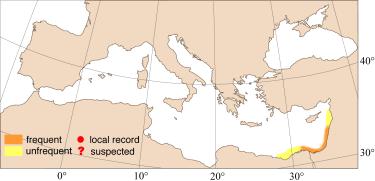
|
Relevant synonyms
Misidentification
Meristic formula
* Note: the generic name is often spelled "Therapon" in the scientific literature, which is invalid. |
|
| photo : David Darom |
|
SHORT
DESCRIPTION
color :
body silvery-grey. Four longitudinal stripes extending to caudal fin, upper three black, the lowermost stripe yellowish to brown. A large black spot on the upper part of dorsal fin between fourth to eighth spines.
size :
common 5-15 cm (max. 18 cm). |
DISTINGUISHING CHARACTERISTICS
Other families: lack of two spines on the operculum (three spines in Serranidae); lack of longitudinal dark stripes (young specimens of Epinephelus costea have brown longitudinal stripes). BIOLOGY / ECOLOGY
habitat :
coastal waters to depths of 30 m. Penetrates to estuaries or even continues upstream. |
|
1st
MEDITERRANEAN RECORD
|

|
|
DISTRIBUTION
|
ESTABLISHMENT SUCCESS
speculated reasons for success :
|
|
|
MODE OF
INTRODUCTION |
IMPORTANCE TO
HUMANS |
|
KEY
REFERENCES
|
 Authistes puta
Authistes puta